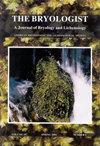苔藓植物标本组织和储存系统:工作人员实践和用户偏好的比较评估
IF 0.8
4区 生物学
Q4 PLANT SCIENCES
引用次数: 0
摘要
摘要关于苔藓植物收藏策展实践的讨论在19世纪和20世纪的文献中有着悠久的历史。本研究旨在1)记录和综合欧洲和北美草药库工作人员使用的苔藓植物储存和组织系统的范围,以及这些做法背后的基本原理;2) 将这些实践和原理与活跃的植物标本馆使用者的策展偏好和原理进行比较/对比;以及3)促进关于苔藓植物收藏管理实践的进一步讨论。我们收集了有关欧洲和北美苔藓植物收藏的工作人员策展实践和用户策展偏好的调查数据。我们分别使用回归模型和主题分析来分析我们的定量数据和定性数据。我们发现,机构人口统计数据,如地理位置、机构类型和植物标本馆总规模,是苔藓植物标本储存和组织实践的重要预测因素,而用户人口统计数据(如年龄、活跃的苔藓学研究议程和当前主题)是植物标本馆用户储存偏好的重要预测指标。在工作人员和植物标本馆使用者的实践/偏好解释中,最常见的主题是方便/无障碍。工作人员和用户对苔藓植物管理实践/偏好的解释中的其他流行主题包括物理因素、遗传传统、缺乏专业知识以及系统发育/分类学问题。我们的研究结果还表明,苔藓群落成员的运作环境在塑造个人的策展实践/偏好方面发挥着重要作用,包括机构和用户人口统计。最后,我们对植物标本馆苔藓植物标本的储存和组织建议进行了讨论。本文章由计算机程序翻译,如有差异,请以英文原文为准。
Bryophyte specimen organization and storage systems: A comparative assessment of staff practices and user preferences
Abstract. Discussions of curation practices for bryophyte collections have a long history in the literature dating back to the 19th and 20th centuries. This study aims to 1) document and synthesize the range of bryophyte storage and organization systems staff report using in European and North American herbaria, as well as the rationale behind these practices; 2) compare/contrast these practices and rationale with the curation preferences and rationale of active herbarium users; and 3) facilitate further discussion regarding practices for curating bryophyte collections. We collected survey data regarding staff curation practices at and user curation preferences for bryophyte collections in Europe and North America. We used regression models and thematic analysis to analyze our quantitative data and qualitative data, respectively. We found that institutional demographics, such as geographic location, institution type, and total herbarium size are significant predictors of bryophyte specimen storage and organization practices, and that user demographics, such as age, active bryology research agenda, and current primary title were significant predictors of the storage preferences of herbarium users. The most common theme that emerged in the practice/preference explanations of staff members and herbarium users was convenience/accessibility. Other prevalent themes in staff and user explanations for their bryophyte curation practices/preferences include physical factors, inherited tradition, lack of expertise, and phylogenetic/taxonomic concerns. Our findings also suggest the context in which members of the bryological community operate plays a significant role in shaping individuals' curation practices/preferences, including both institutional and user demographics. We conclude by offering a discussion of recommendations for bryophyte specimen storage and organization at herbaria.
求助全文
通过发布文献求助,成功后即可免费获取论文全文。
去求助
来源期刊

Bryologist
生物-植物科学
CiteScore
2.40
自引率
11.10%
发文量
40
审稿时长
>12 weeks
期刊介绍:
The Bryologist is an international journal devoted to all aspects of bryology and lichenology, and we welcome reviews, research papers and short communications from all members of American Bryological and Lichenological Society (ABLS). We also publish lists of current literature, book reviews and news items about members and event. All back issues of the journal are maintained electronically. The first issue of The Bryologist was published in 1898, with the formation of the Society.
Author instructions are available from the journal website and the manuscript submission site, each of which is listed at the ABLS.org website.
All submissions to the journal are subject to at least two peer reviews, and both the reviews and the identities of reviewers are treated confidentially. Reviewers are asked to acknowledge possible conflicts of interest and to provide strictly objective assessments of the suitability and scholarly merit of the submissions under review.
 求助内容:
求助内容: 应助结果提醒方式:
应助结果提醒方式:


